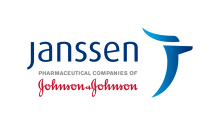All the countries discussed in this report have well-developed HTA systems but face growing challenges in assessing the value of the newest innovative treatments, especially in the area of oncology. Many of these innovative products are personalised or targeted at smaller populations, and often have less evidence behind them because of the difficulties in finding enough patients to make up a large Phase 3 clinical trial. Some are part of combination regimes or require companion diagnostics to identify the most appropriate patient groups. These innovations are sometimes categorised under a new class of treatments— advanced therapy medicinal products— which are treatments based on genes, tissues or cells. For this reason, we refer in this paper to “innovative therapies” rather than “innovative drugs.”
- HTA structures and methodology are coming under increasing pressure to adapt
- A greater range of conditional agreements are needed to improve patient access
- Improved data collection infrastructure is required
- Greater transparency in the decision-making process should become the norm
- Patient views need to play a greater role in decision-making, as well as deliberation
- Greater harmonisation can be helpful but remains challenging
Supplemental material for this report can be found here:






